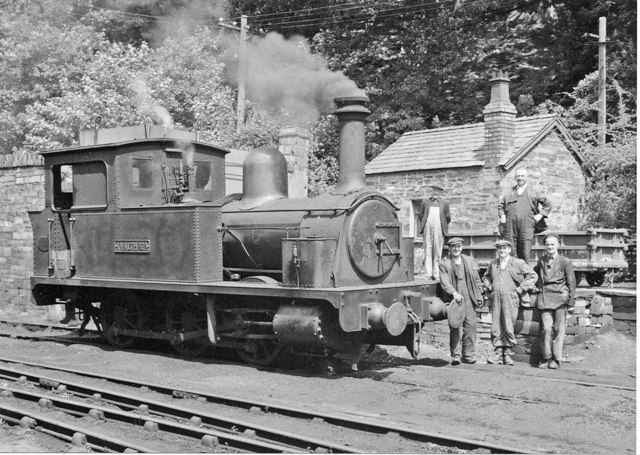Empty slate train near Bethel on its return to Llanberis.
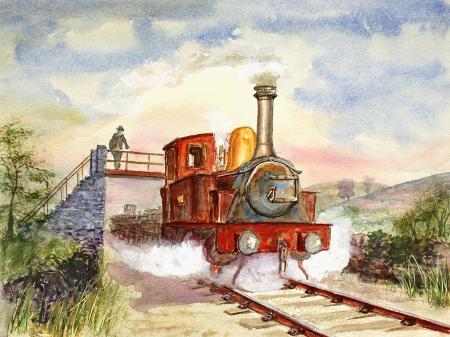
Watercolour based on my first memory of seeing a steam engine.
ABOVE: Hunslet loco 'Amalthaea' hauling an empty slate wagon train at Penscoins on its return to Llanberis.
BELOW: Pen & Ink sketch I did some years ago.

ABOVE: Steelwork in preparation showing 780 rivets for a 16mm scale model to run on Gauge 3 (64mm) track.
BELOW: Early photo of Padarn Railway at Muriau next to Llyn Peris. Jenny Lind is just visible at the far end of the train.
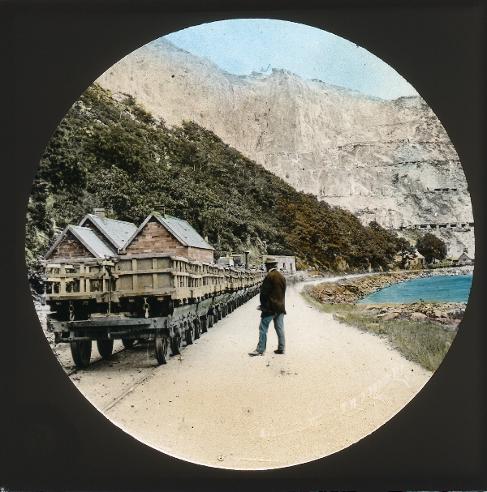
BELOW: Previously unpublished photos of Amalthaea have come to light. I was lent them to scan, so I'm including low resolution copies for you to enjoy.
The Dinorwic Quarries transported slates to Port Dinorwic via a horse drawn tramway from 1824. The route was somewhat tortuous and utilised three incline planes. It became inefficient over the years and a new route was sought. This ran from the level of Llyn Peris and Llyn Padarn along a more easy gradient to the escarpment high above the port at Penscoins. From the top of the escarpment an incline plane took the slate wagons down their final run to the harbour. Instead of hauling the small 1'-10.3/4" gauge slate wagons from Llanberis to Port Dinorwic as did the neighbouring Penrhyn Railway, a new larger 4'-0" gauge horse railway was constructed from about 1842/3. It carries the small slate wagons on top of simple 4 ft 'host' wagons. These were used from the opening until the end of operations in 1962.
The horses were replaced in 1848 by a pair of unusual 0-4-0 tender locomotives built by Alfred Horlock of Northfleet, Kent. They were named Fire Queen and Jenny Lind.
Only Fire Queen survives and can be seen at the Insidtrial Railway Museum at Penrhyn Castle, Bangor, North Wales.
The two Horlock engines were replaced by three Hunslet 0-6-0 tank engines in the 1880's. These were cut up at Llanberis when the Padarn Railway ceased operation in the early 1960's. Only the side tanks, a chimney, and a few small items remain at the National Slate Museum, Llanberis, although they are not readily accessible to the public.
The drawing of the Hunslet 0-6-0 has been heavily reworked in Photoshop from an old microfilm I made in the 1980's off a very poor quality maker's print.
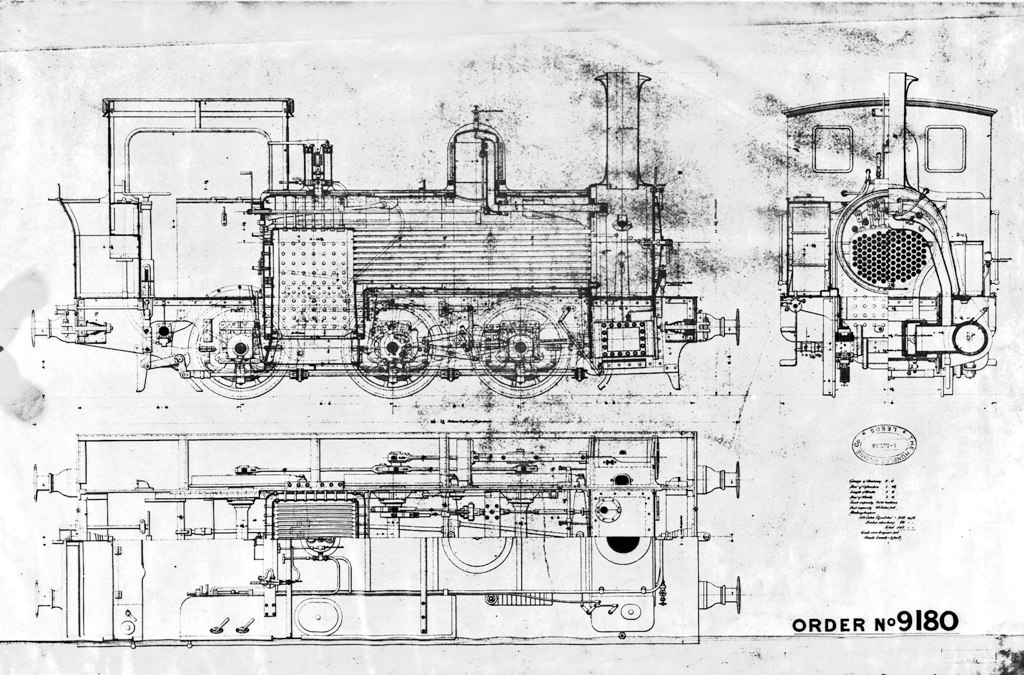
Next we have the quarrymen's coach drawn by my friend Keith Jaggers when he was a student at Bangor University. Again, this was microfilmed in the 1970's and has been scanned and reworked a little in Photoshop.
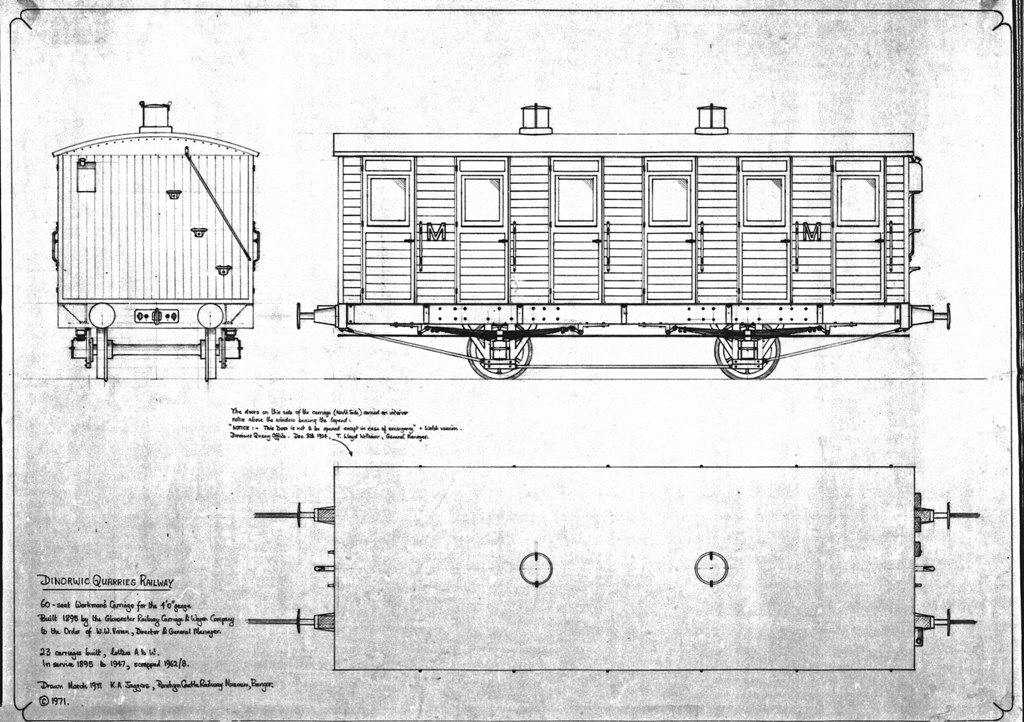
BELOW: A photo montage using a photo of one of the surviving doors.

BELOW: FIRE QUEEN. Alfred Horlock 1848

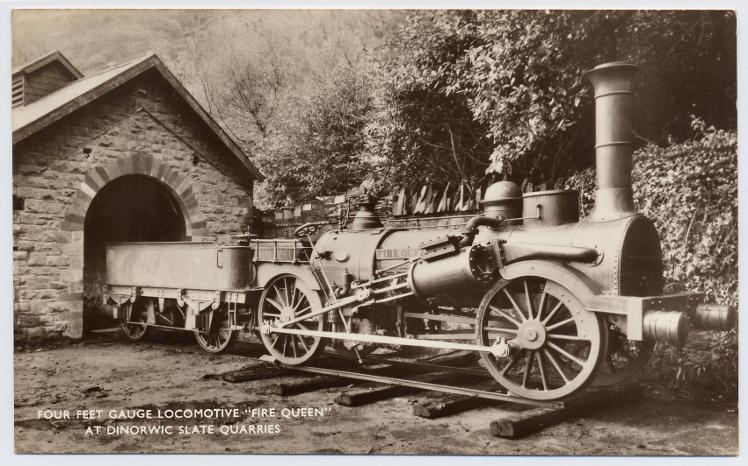
BELOW: JENNY LIND.




